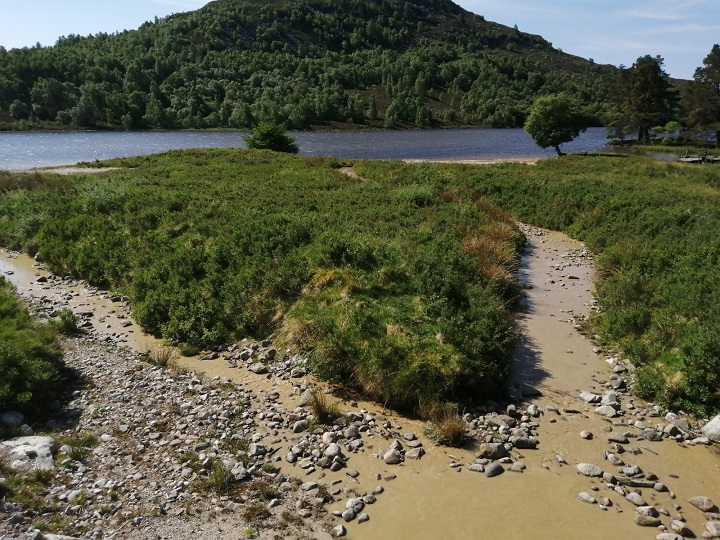
Silt first started flowing into the Gynack River system, which flows into the River Spey, six and a half weeks ago (see here). I reported and others reported this to both the Scottish Environmental Protection Agency and the Cairngorms National Park Authority (CNPA). The CNPA responded that they were not sure whether the silt flowing down the river, also known as the Allt Mhor, was connected with the overflow channel which they had granted planning permission for back in 2016 and therefore whether any planning conditions had been breached.
There is no doubt, however, that the silt that was was being washed into Loch Gynack yesterday was flowing the overflow channel which is currently being “repaired” after it failed soon after construction (see here). The silt is therefore a planning enforcement matter.
There are still no documents on the CNPA’s planning portal (see here) to explain what went wrong or what the repair work involves. In the absence of any modifications to the original decision in 2017, all the planning conditions still apply even though aspects of the approved Construction and Environmental Management Statement (CEMS) are out of date:

The CEMS clearly states that silt is a pollutant and should not flow into rivers systems:
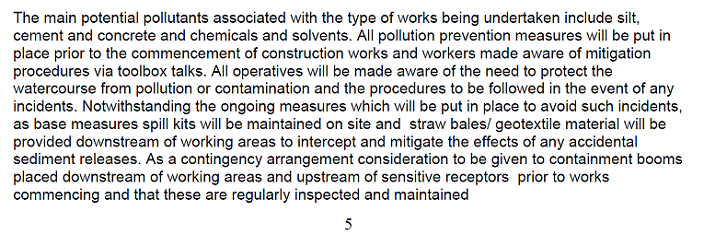
It contains a number of general provisions to prevent silt from entering either the Allt Mhor or Loch Gynack:
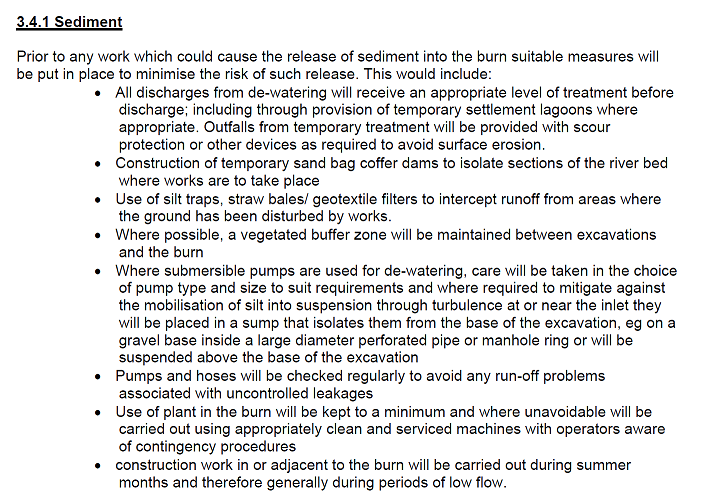
And the CEMS also contained a number of specific measures to prevent silt flowing down the overflow channel as it was constructed:

These additional measures were necessary because much of the overflow channel was constructed along the line of an existing burn and it is clearly difficult, if not impossible, to prevent silt flowing into river systems where construction work takes place in flowing water. The CEMS proposed to address this problem by diverting any water, including the existing burns, flowing into the channel out through temporary 150mm culverts on its downhill side. A sediment pond was also dug out in a new “wetland area” at the edge of the plantation just above Loch Gynack.
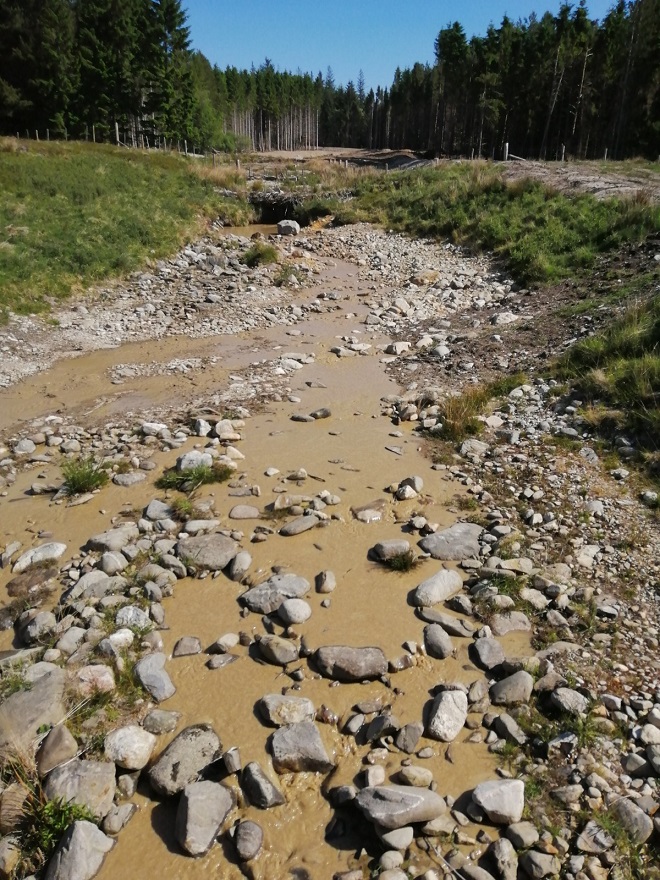
The photos from 9th June suggest that neither the diversion culverts nor the sedimentation pond, as proposed in the original plans, have been operating properly during the repairs works. So why, six weeks later, have neither the CNPA or SEPA done anything to rectify this and prevent the flow of silt into the river system?
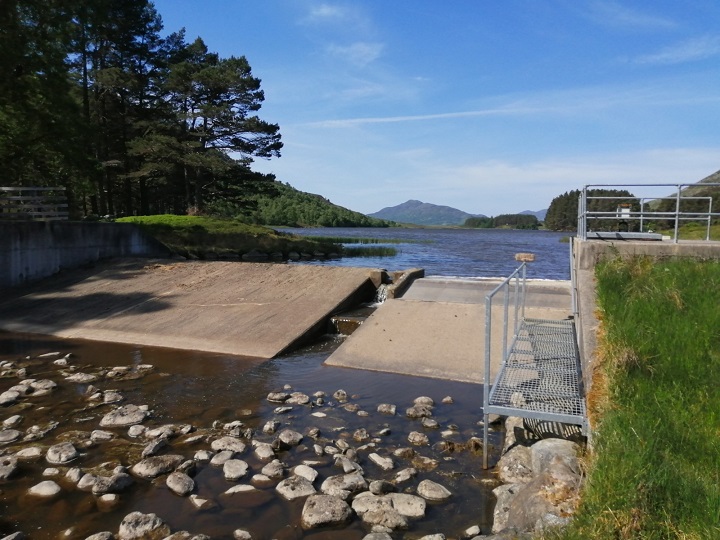
Loch Gynack, itself, acts like a giant sedimentation pond for the silt flowing down the overflow, however that has not been sufficient to stop some of the silt flowing out and down into the River Spey Special Area of Conservation below. NatureScot, the agency responsible for these protected areas, should also be up in arms.
The question all this raises is what would very rich landowners, like the Jaffar Family who own the Pitmain Estate, actually need to do before any of our Public Authorities were prepared to order them to stop work that is damaging the environment in the National Park? Perhaps the new members appointed to the board of the Cairngorms National Park on 1st June (see here) will be prepared to call for action? One might hope, for example, that Sandy Bremner, as chair of the River Dee Trust, would understand the importance of preventing pollution from flowing into the River Spey and for the CNPA to use every power it has to prevent this happening.
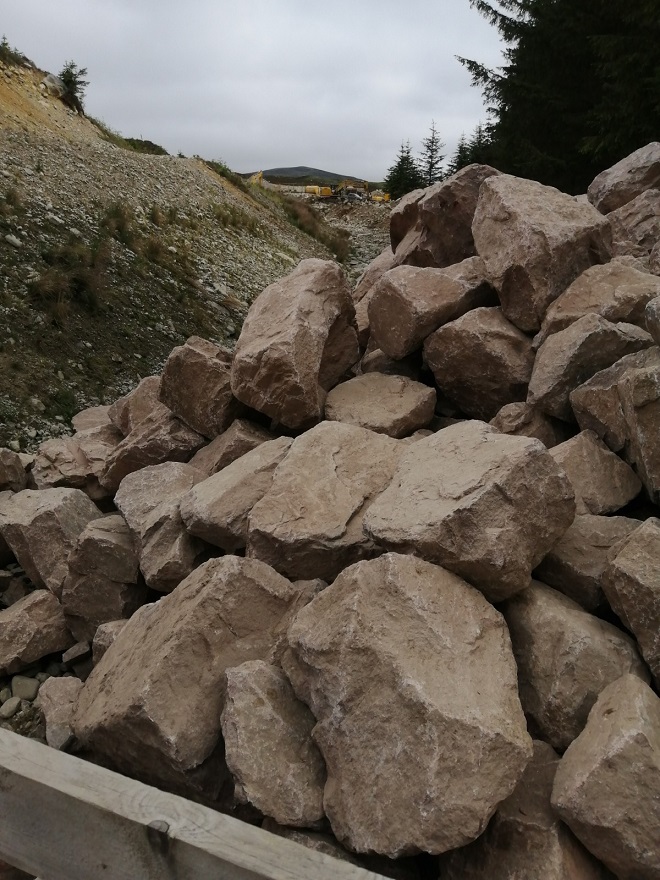
Meantime other recent photos suggest that large amounts of rock re-inforcement has been brought in to Pitmain to reinforce the sides of the overflow channel. Whether this will work is a moot point as some of the rip rap bouldering used to line the channel previously was washed away soon after it was first used:
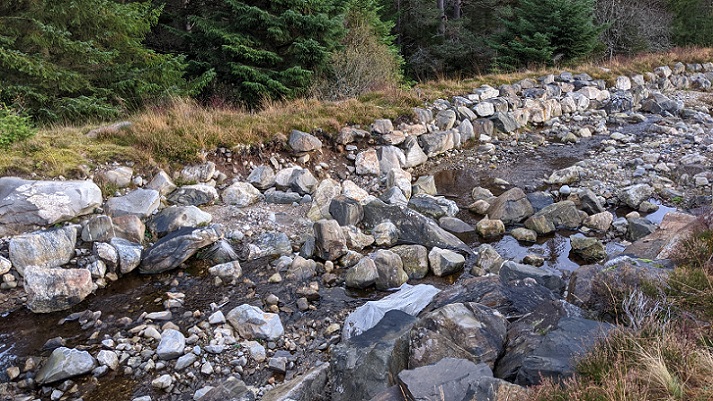
Judging by a comparison of the size of the boulders in the two photos, the ideas appears to be that enormous rocks – rumoured to have come from a quarry near Nairn – will contain flood water where smaller ones didn’t.
There are reasons to doubt that, given the force that flood water will be forced through the boulders and the size of the bank behind, but perhaps the current plan is to embed the new boulders in concrete? That surely should require a fresh planning application. Unfortunately, without any plans there is no way for anyone to evaluate the current repair work, either whether it will work or the environmental costs.
After the overflow channel was closed I called on the CNPA Board to conduct an investigation into why it had failed. That has never happened and instead the CNPA has waited 5 years for the landowner to come up with a solution. It is still not clear whether CNPA planning staff have even seen that solution but if so they are keeping it from the public.
If Lorna Slater, the Green MSP and Minister for National Parks, wants them to take a lead in tackling the nature and climate emergencies, she needs to start paying attention to how they are operating the planning system, insist they up their game and start taking action against landowners and developers who damage the natural environment.
That’s a big question, but there’s one even bigger: what is the point of having a national park that isn’t national ?
Bit too cryptic for me Ron..what do you mean.
So what, who cares it’s all they tourists anyway
Investigator and comments are simply brilliant. Scottish government et al in control (that’s ironic!) needs to be called upon to explain this disgraceful situation!
This is typical of our CNPA – great at being up to their necks in paperwork, but hardly ever visit problem areas far less take enforcement action when they are notified of clear breaches. I recall a recent silt pollution problem on the Dee emanating from a building site. This was permitted to go on for months with no action from CNPA or SEPA. You are right, Nick, to put in the title of this blog what is the point of the Cairngorms National Park Planning Authority? I would say the same about SEPA.
They’re all xxxxxxxxs and should be xxxx!
While I understand the sentiments this is not to be taken literally! My apologies, when editing out the word I also thought I had replied to say this but for some reason the reply was not published (my responsibility, my blog). I think it is important for people to be able to express strong feelings but it is important they think when doing this. Nick
Cairngorm national Park equals INCOMERS (preferably from the south) getting paid to tell everybody how good they are at looking after the environment while actually not knowing what they are doing. Pen pusher hippy type freeloaders who learned from books and talk a good story, never ran a business in their life but expect everyone to pay for their idilic job’s teaching the local bumkins about not damaging the countryside. It’s a big holiday park for all the well to do middle classes to explore.
Andrew, I would be interested in hearing your evidence for these assertions, Nick